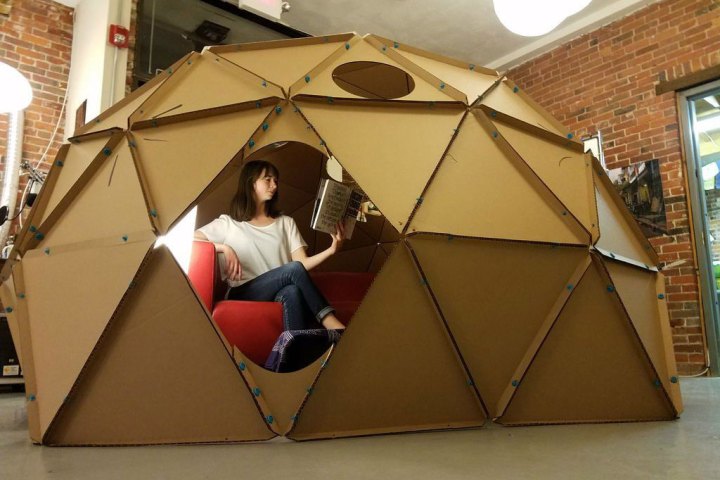
Geodesic domes are essentially what you would get if you cut Disney World’s Epcot Center globe in half. Other than perhaps functioning as a futuristic tree house, they aren’t that practical … but there’s no denying they are just downright pleasing. So why not build one just for fun? With summer now in full swing, there’s no better time to enjoy these funky buildings, but as you might imagine, you can’t simply walk into Geodesic Plus and pick one up off the shelf.
Well, thanks to a savvy engineering team named Design that Matters over at the popular DIY site Instructables, anyone with a large batch of cardboard, some Makedo screws, and access to a laser cutter can make one of these for themselves. Obviously, access to a laser cutter isn’t something every neighborhood has readily available so while this may be the hardest step to complete, driven builders could actually use an X-Acto knife — though this would require much more construction time.
To help you get started, we’ve compiled an accurate tools and materials list required for pulling off the build and listed it below. Like any project requiring the use of a knife (or laser cutter), we recommend having an above-average knowledge of the tools before attempting the construction. With that said, here’s everything you’ll need to get started:
Tools:
- Makedo screws (can substitute zip ties or binder clips)
- Design template (downloadable via Instructables)
- Laser cutter (or X-Acto knife if a laser cutter isn’t available)
Materials:
- 2-by-3 foot cardboard stock (40 panels)
With the small — yet necessary — build list at the ready, it’s now time to start constructing your very own cardboard geodesic dome. Simply follow the step-by-step walkthrough posted to Instructables, as well as design template posted to the guide, and in a matter of hours, your new geodesic dome will be the envy of the neighborhood. Happy building!



